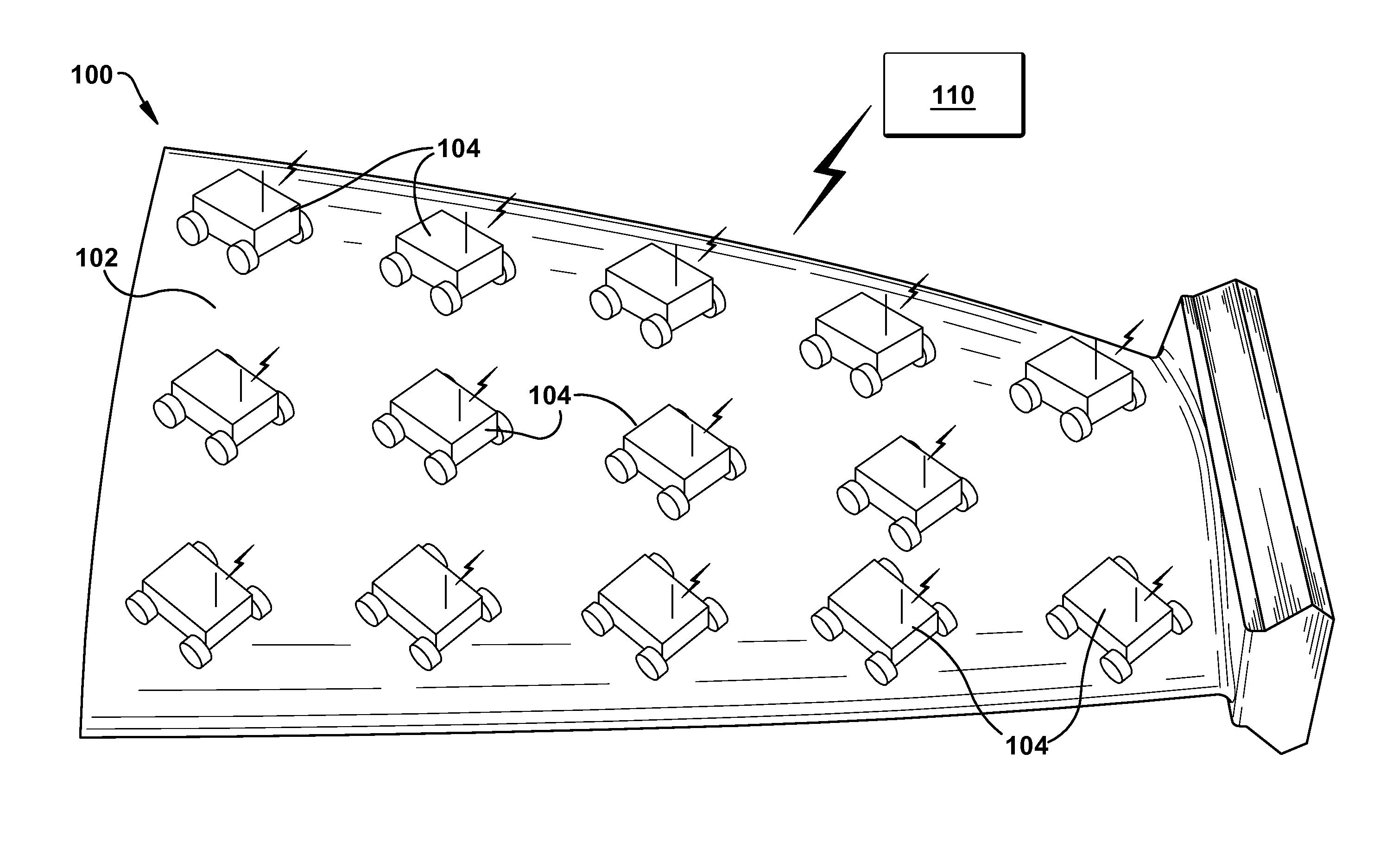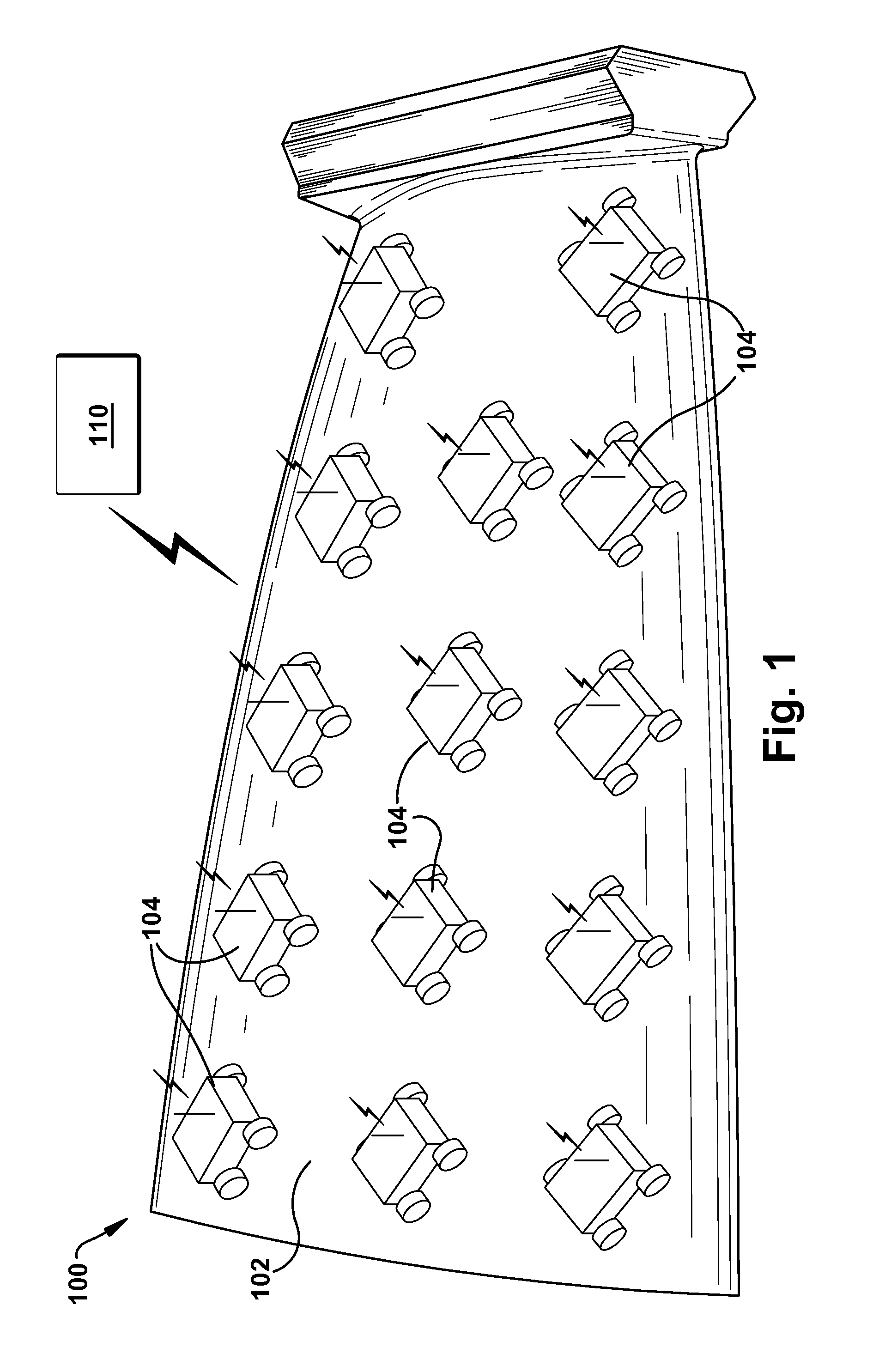In-situ robotic inspection of components
a robotic inspection and component technology, applied in the field of turbines, can solve the problems of inability to detect cracks, unreliable visual inspection, and degrade protective thermal coatings, and achieve the effects of reducing the safety of workers, and reducing the risk of damag
- Summary
- Abstract
- Description
- Claims
- Application Information
AI Technical Summary
Benefits of technology
Problems solved by technology
Method used
Image
Examples
Embodiment Construction
[0014]Systems for inspecting surfaces of components in-situ within a turbomachine, e.g., blades or vanes, are disclosed. As discussed in more detail herein, in one embodiment, structured infrared (IR) light is created, e.g., multiple lines using programmable light emitting diodes (LEDs), and a cooled IR focal plane detector chip can then image surface temperature as a function of time. Multiple robots with LED driven sources and IR detectors can be spread out over the surface area of interest, enabling full coverage. The thermal images can be converted into time-of-flight maps and temperature maps at a specific critical time, synchronized with IR LEDs on-off triggers. These images can give a direct indication of a defect size. Comparison can then be carried out with optical images. The resulting fused images directly supply quantitative defect information.
[0015]Turning to FIG. 1, one embodiment of the invention is shown. System 100 is shown in use inspecting a blade 102. As known in...
PUM
| Property | Measurement | Unit |
|---|---|---|
| heat | aaaaa | aaaaa |
| thermal | aaaaa | aaaaa |
| ultrasonic testing | aaaaa | aaaaa |
Abstract
Description
Claims
Application Information
 Login to View More
Login to View More - R&D
- Intellectual Property
- Life Sciences
- Materials
- Tech Scout
- Unparalleled Data Quality
- Higher Quality Content
- 60% Fewer Hallucinations
Browse by: Latest US Patents, China's latest patents, Technical Efficacy Thesaurus, Application Domain, Technology Topic, Popular Technical Reports.
© 2025 PatSnap. All rights reserved.Legal|Privacy policy|Modern Slavery Act Transparency Statement|Sitemap|About US| Contact US: help@patsnap.com



